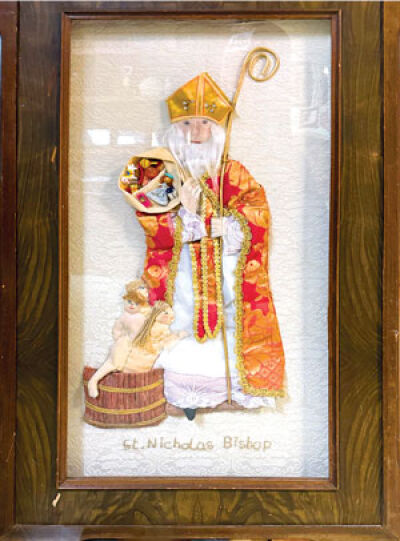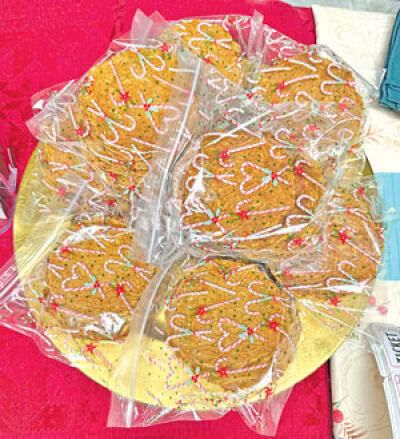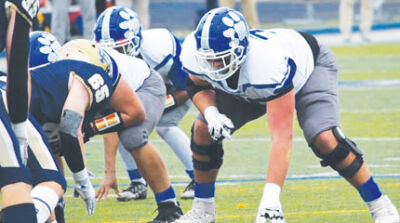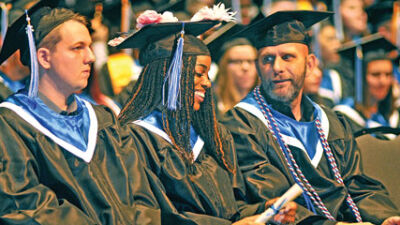ST. CLAIR SHORES — Christmas traditions vary from culture to culture, celebrating the festive season in their own ways.
Karin Schwalbe, a member of the Carpathia Club in Metro Detroit, said in German culture, Saint Nicholas visits homes on Dec. 6. People would clean up their shoes on the night of Dec. 5 and put them out for Saint Nicholas to find.
“If you were good, the next morning you would find something in your shoes,” Schwalbe said. “Sweets, candies or there would be fruits, apples, nuts, things like that. And then the same with if you were bad, you found, like, a twig.”
Saint Nicholas is a person found in a lot of European cultures including Dutch, Croatian and Belgian as well.
Ivan Callebaut, a member of the Belgian American Association, also put his shoes out for Saint Nicholas, or Sinterklaas. Other than that, he said the traditions are pretty similar to the ones in America.
“Really, we have Saint Nicholas the 5th or the 6th and on Christmas, you know, they started Santa Claus like in the ’70s late ’60s,” Callebaut said. “On the night of the 5th of December, we put our shoes out and, yes, you put a carrot in it, a few pieces of sugar and a shot glass for Saint Nicholas.”
In documents provided by Cheryl Heckla, director of the Belgian American Museum in Roseville, in Belgian culture, Saint Nicholas also arrived on Dec. 6. It was noted that it is the children’s prelude to Christmas.
“Days before his feast, the children gather around the fireplace to pray and sing songs in honor of the saintly bishop,” the documents stated. “They are reminded that they must be on their best behavior.”
French culture celebrates Père Noel, who is accompanied by a donkey, according to the documents.
Advent calendars are also a part of German culture, Schwalbe said. For Schwalbe, these calendars had a picture behind each door every day leading up to Christmas Eve on Dec. 24.
“Now they have it where you can get chocolate behind it. Now you can get it with beer and wine,” Schwalbe said. “But originally it was just a picture.”
Christmas Eve is the day German people celebrate Christmas, Schwalbe said. During the day, the parents would get a Christmas tree and set it up, hidden in a separate room with the door closed. They would open the doors in the evening, Schwalbe said, and the children would get to see the tree for the first time, decorated with lit candles.
“Then there would be the gifts underneath for the kids,” Schwalbe said. “Not necessarily that parents exchanged with each other or with anyone else. It was more based on just for the kids.”
On Christmas Day, families celebrated with extended family such as grandparents, and Dec. 26 was called the second Christmas Day, Schwalbe said.
“And you just continued, and you got together with other family that you hadn’t seen yet, or with friends, something like that,” Schwalbe said. “So it was a longer celebration, but Christmas Eve was just for the immediate family.”
The document stated that Christmas celebrations in the Dutch or Flemish-speaking parts of Belgium don’t start until the night of Christmas Eve.
“Since the celebration doesn’t start until Christmas night, the Christmas decorations are prepared just a few days before Christmas, or on Christmas Eve,” the document stated.
It was also noted that the Christmas tree, which is of German origin, didn’t become popular until after World War I.
On the night of Christmas Eve, families gather around a crib, light candles and sing Christmas carols, the document stated. The family would also attend midnight mass. Schwalbe and Callebaut both mentioned going to midnight mass growing up.
“Upon their return from church, all are seated at the table to enjoy raisin bread and hot chocolate and, in some places, sausage rolls,” the document stated. “Before Christmas Day, married sons and daughters may drop in with their children to join in the family dinner.”
Gift exchanging, except for practical gifts, was left for New Year’s Day. Callebaut said he would write and read letters to his parents, godparents and grandparents.
“And when you’re done reading your letter, you got some money and some sweets and then you got a gift for New Year’s,” Callebaut said.
In German culture, Christmas treats include Lebkuchen, a chocolate covered ginger cookie, which traces its origins back to Nuremberg, Germany. Belgian sweets include lukken on New Year’s Day. They also have marzipan and speculaas.
In Norway, “cheerful decorating, house cleaning, baking and decorating” is done before “peace of Christmas” that started on Christmas Eve. The cleaning, baking and decorating had a deeper meaning to it.
“Then quiet reigned, ’lest the spirits be attracted by loud noises or be offended by the sight of someone working,” the documents stated.
According to visitoslo.com, on the evening of Dec. 23, some families will eat a hot rice pudding called risengrynsgrøt. There is a single almond hidden in the batch of the pudding and whoever finds it gets a marzipan pig.
In Finland, according to the documents, Christmas is called Joulu and church services begin at dawn on Christmas Day. After church, many people visit family graves and “place burning candles in memory of loved ones” the documents said.
“Then they race home for the Christmas meal of suckling pig with Lingenberry relish, turnip, liver and vegetable casseroles and other favorite foods,” the documents read. “For dessert, a rice pudding is served with a single almond.”
Both Schwalbe and Callebaut said they hope future generations carry on their cultural family traditions.
“I sure do,” Callebaut said. “My godchildren, for Christmas they get an ornament. I try to encourage them to celebrate Christmas. It’s a family thing.”
 Publication select ▼
Publication select ▼

























